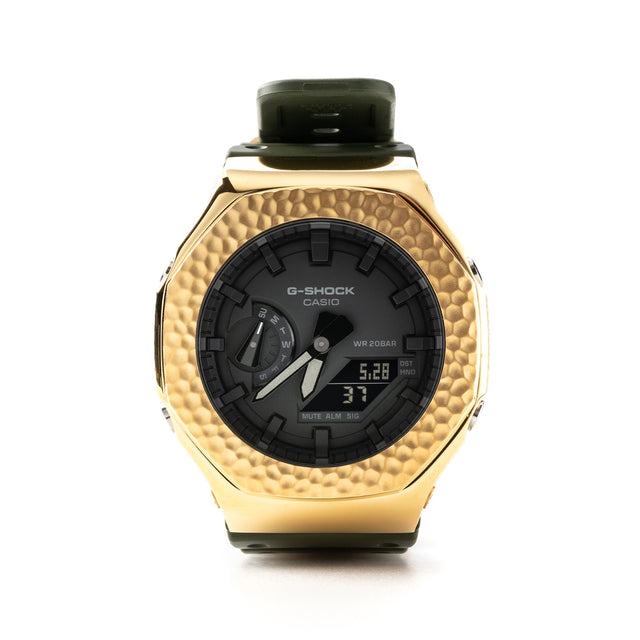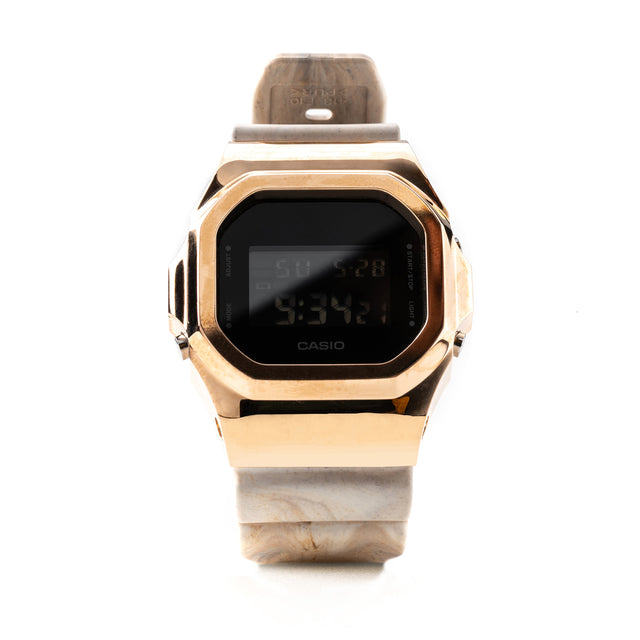Materials
Bronze

Bronze is a metal alloy that is composed primarily of copper, with varying amounts of other metals such as tin, zinc, and nickel. The proportion of copper in bronze can be as high as 90% or more, with the remaining percentage consisting of the other metals.
Bronze has been used for various purposes throughout history, including weapons, tools, jewelry, and decorative objects. It is known for its durability, strength, and resistance to corrosion, which makes it a popular choice for outdoor sculptures and monuments. The color of bronze can vary from a reddish-brown to a yellowish-brown, depending on the specific composition of the alloy.
Stainless Steel

Stainless steel is a type of steel alloy that contains at least 10.5% chromium, as well as varying amounts of other metals such as nickel, molybdenum, and titanium. The chromium in stainless steel forms a thin, invisible layer of chromium oxide on the surface of the metal, which protects it from corrosion and gives it its distinctive "stainless" appearance.
Stainless steel is known for its high durability, strength, and resistance to corrosion, making it a popular choice for a wide range of applications, including kitchenware, cutlery, medical equipment, construction materials, and automotive parts. It can be produced in a variety of different grades and finishes, each with its own unique properties and characteristics.
Damascus Steel

Damascus steel is a type of steel that is characterized by its distinctive patterned surface, which is created by the forging and folding of multiple layers of steel. This process creates a material that is both strong and flexible, with a unique appearance that is highly prized by craftsmen and collectors.
The exact origins of Damascus steel are unclear, but it is believed to have originated in the Middle East or India, and to have been used for sword-making as early as the 3rd century AD. The process of forging Damascus steel involves heating and hammering together multiple layers of high-carbon and low-carbon steel, which are then repeatedly folded and forged to create a layered pattern. The resulting material is then quenched in water or oil to harden it and tempered to improve its toughness and resilience.
The unique patterned appearance of Damascus steel is created by the contrast between the high-carbon and low-carbon layers, which react differently to the etching process used to reveal the pattern. While traditional Damascus steel was typically used for weapons, modern versions of the material are used for a wide range of applications, including knives, jewelry, and decorative objects.
Titanium

Titanium is a chemical element with the symbol Ti and atomic number 22. It is a strong, lightweight, and corrosion-resistant metal that has a silver-gray color.
Titanium is known for its high strength-to-weight ratio, which makes it useful in a variety of applications where weight is a concern, such as aerospace, military, and sporting equipment. It is also biocompatible, which makes it an ideal choice for medical implants, such as artificial joints and dental implants.
In addition to its strength and corrosion resistance, titanium has a high melting point and is highly resistant to heat and chemicals. It is also non-magnetic and non-toxic, which makes it useful in a variety of other applications, such as in the production of electronics, marine equipment, and architectural structures.
Titanium is typically extracted from its ores using a variety of methods, including the Kroll process and the Hunter process. It is then alloyed with other metals, such as aluminum, vanadium, and iron, to create materials with specific properties and characteristics.
Carbon Fiber

Carbon fiber is a lightweight and high-strength material made from thin strands of carbon atoms that are tightly woven together to form a strong and durable fabric-like material.
The process of making carbon fiber involves heating a polymer material, such as polyacrylonitrile (PAN), rayon, or petroleum pitch, to high temperatures in the absence of oxygen to create a carbonized material. This material is then spun into fibers that are woven together to create a fabric-like material. The fibers are then treated with a resin to create a strong and rigid composite material that is resistant to deformation and fatigue.
Carbon fiber is known for its high strength-to-weight ratio, which makes it ideal for use in applications where weight is a concern, such as aerospace, automotive, and sporting equipment. The material is also highly resistant to corrosion, chemicals, and heat, which makes it suitable for use in harsh environments.
Carbon fiber is used in a wide range of applications, including aircraft and spacecraft components, racing car bodies and parts, bicycle frames, fishing rods, and sporting goods such as tennis rackets and golf clubs. It is also used in the construction of high-end musical instruments, such as guitars and violins, due to its light weight and strength.





